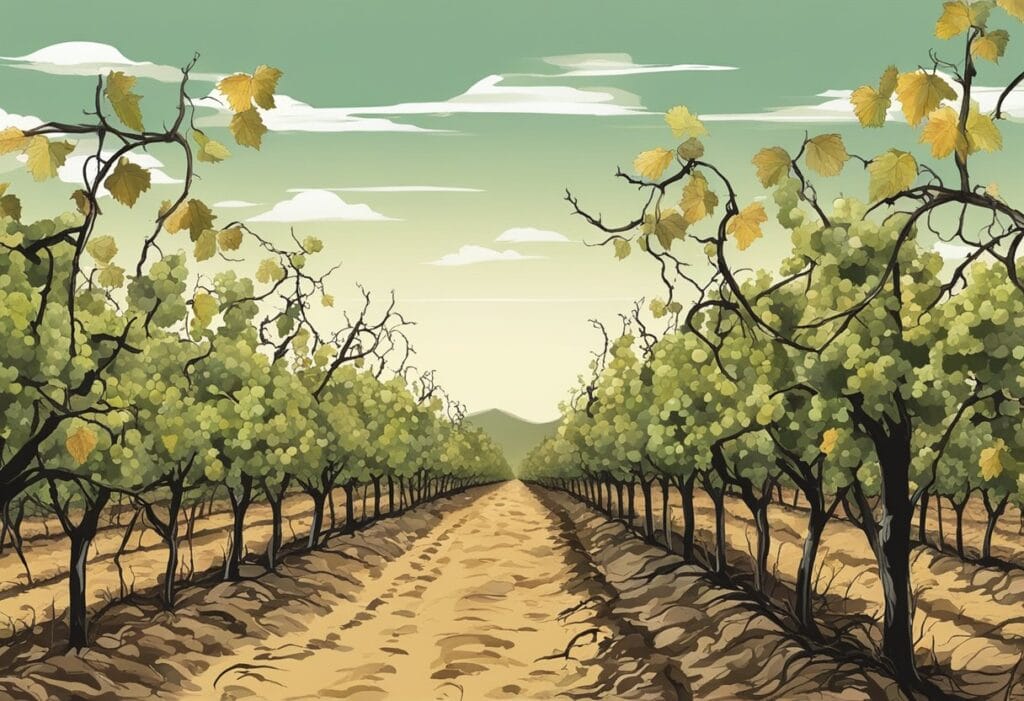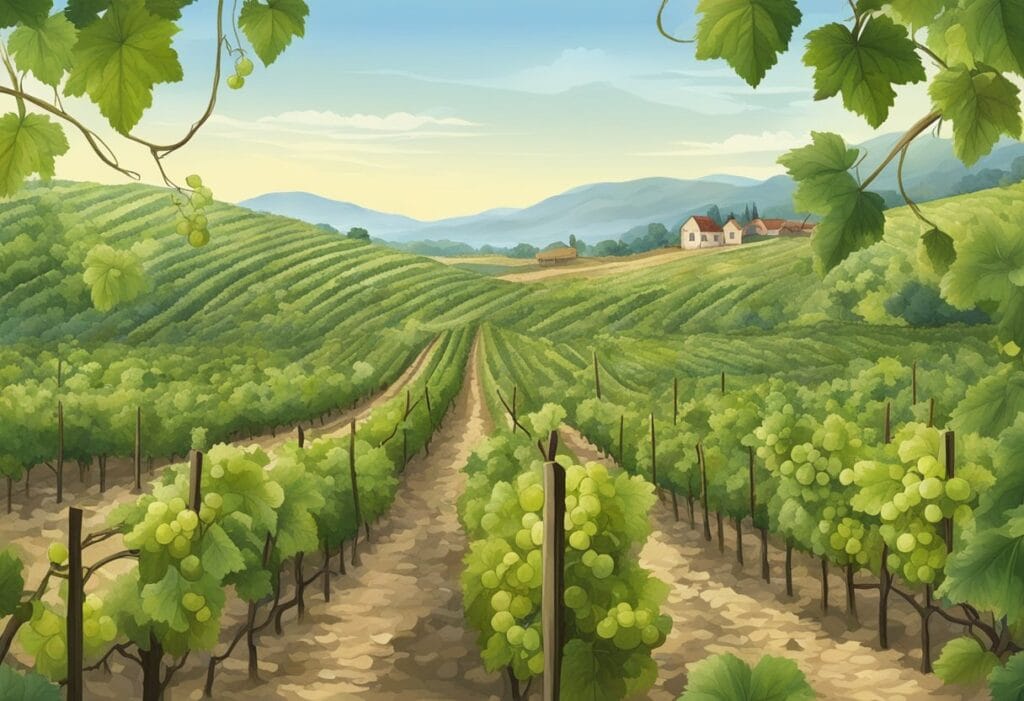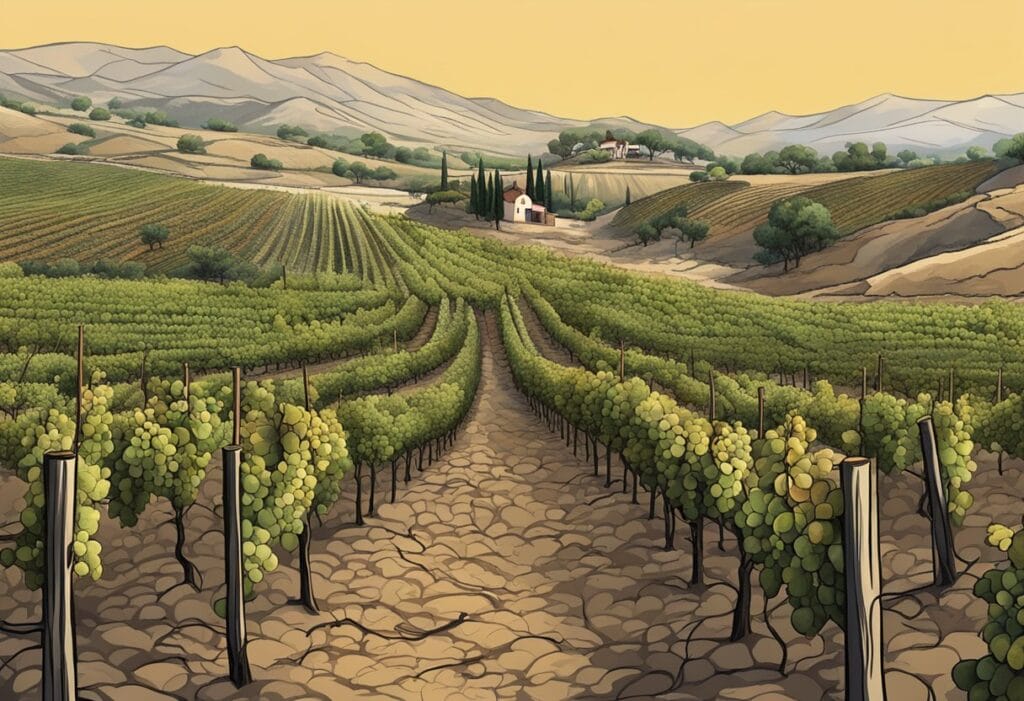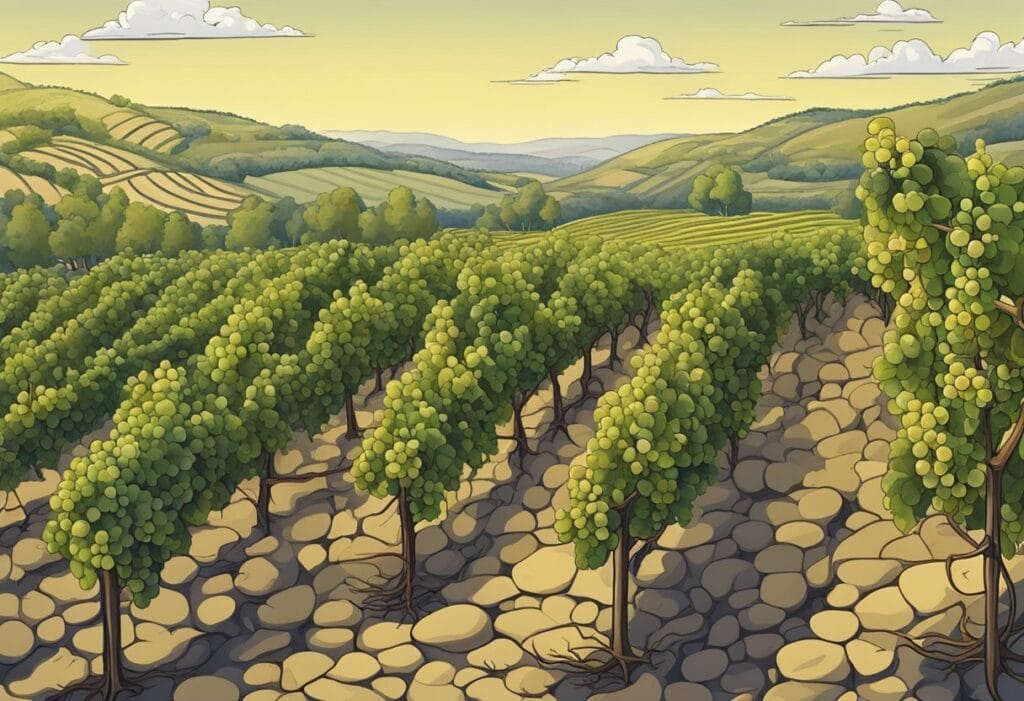The phylloxera epidemic stands as one of the most catastrophic events in the history of viticulture. This tiny aphid, Daktulosphaira vitifoliae, wreaked havoc on European vineyards in the late 19th century, nearly collapsing wine industries and transforming agricultural practices. Initially discovered in the United States, phylloxera’s roots trace back to the Victorian era, when the North American vine specimens brought to Europe unknowingly carried this devastating pest.

Understanding and combating the phylloxera epidemic required an international scientific effort and substantial changes to viticultural practice. Time-honored traditions of wine-growing had to be reconsidered as entomologists and botanists worked to identify the pest and devise effective interventions.
This led to the adoption of new agricultural technologies and the reconstitution of vineyards with phylloxera-resistant rootstocks, framing future approaches to pest management in vineyards across the globe.
Key Takeaways
- Phylloxera, a destructive aphid, caused a major crisis in European wine production in the 19th century.
- Scientific collaboration was crucial in identifying the pest and developing strategies to save the industry.
- The epidemic led to enduring changes in vineyard management and grape cultivation practices worldwide.
Origin and Identification
In addressing the devastation of vineyards by phylloxera, it’s crucial to understand its biological roots and the history behind its spread, as well as to identify key characteristics for detection.
Biological Classification
The phylloxera pest, scientifically named Daktulosphaira vitifoliae, belongs to the Hemiptera order within the family Phylloxeridae. As an insect pest closely related to aphids, it poses a significant threat to grapevines, especially to Vitis vinifera.
Initial Outbreaks and Spread
The initial outbreaks of phylloxera can be traced back to Europe in the 1860s. Historically significant, the pest appeared first in the southern Rhône region of France, with its roots likely originating from North America. The spread was rapid and had catastrophic effects on vineyards across Europe.
Phylloxera Lifecycle
The lifecycle of phylloxera includes several distinct forms: the leaf form, winged form, nymphs, sexual form, and the notorious root form. Understanding its lifecycle is imperative for managing the pest.
Physical Characteristics
Physically, phylloxera insects are minuscule with a pale yellow color. The root form creates nodosities and tuberosities on the grapevine roots, while the leaf form is known for producing leaf galls. These deformities are due to the insect’s feeding wounds.
Detection and Diagnosis
To detect and diagnose a phylloxera infestation, you should look for the characteristic galls on leaves or swelling on roots. Prompt identification is crucial to manage the infestation and save affected vineyards from further damage.
Impact on Viticulture
The Phylloxera epidemic drastically altered viticulture, leading to widespread damage in European vineyards, promoting changes in winemaking regions, and necessitating significant recovery efforts with enduring economic effects.
Effects on European Vineyards
The Phylloxera crisis began in the mid-19th century when the tiny, aphid-like insect decimated European grapevines, particularly in regions like France, Italy, and Spain. You might be surprised to learn that historical regions such as Bordeaux and the Rhône Valley saw their vines’ roots destroyed, causing widespread ruin. Known for its prized French vine, even the prestigious Champagne region was not spared.
Spread to New Regions
Following the devastation in Europe, Phylloxera found its way to other continents, impacting regions from Australia to the Americas, including eminent wine-producing areas such as California, South Africa, Chile, New Zealand, and Argentina. Each of these places faced the arduous task of protecting and reviving their vineyards against the relentless pest.
Response and Recovery
The response to this disaster was multifaceted. Grafting European vines onto phylloxera-resistant American rootstock became the most effective solution. Varieties such as Vitis labrusca, Vitis riparia, and Vitis rupestris offered a lifeline, allowing viticulturists to salvage the situation by creating cross-hybrids and using American vines as a shield against further destruction.
Economic Outcomes
Your understanding of the past can inform current economic decisions. The financial turmoil that followed in the wake of Phylloxera dramatically reshaped the wine industry, forcing some areas to completely restructure. While regions like Bordeaux eventually bounced back, forging paths to new markets, the economic impacts rippled across Europe for decades, underscoring the necessity for diligence in protecting against such pests.
Scientific and Agronomic Responses
In the face of the phylloxera epidemic, scientists and agronomists developed various strategies to mitigate this pest’s impact on viticulture. These measures range from breeding resistant grape varieties to adapting viticultural practices.

Development of Resistant Varieties
Researchers crossbred Vitis vinifera with phylloxera-resistant American species, such as Vitis labrusca and Vitis riparia from Missouri, creating hybrids capable of withstanding phylloxera attacks. These new varieties often possessed inherent resistance, particularly in their root systems, which could repel the life cycle of phylloxera, including root and leaf gall formation.
Grafting Techniques
Grafting Vitis vinifera onto phylloxera-resistant American rootstock became a widely adopted solution. This method allowed European grapevines, or vieilles vignes françaises, to survive by using the roots of varieties that evolved to resist the pest, maintaining the quality of traditional French vines above ground.
Agrochemical Solutions
Applications of specific chemicals to soil acted as a poison to control phylloxera, yet their use has diminished over time due to environmental concerns. Current agrochemical approaches are more targeted and environmentally conscious, focusing on maintaining soil health and supporting the vine’s natural defenses.
Biological Analysis
Intensive study of phylloxera’s life cycle and interaction with different soil types and climates led to improved understanding, which informs all other response strategies. This biological analysis involves scrutinizing the pest’s behavior and environmental factors that influence its reproduction and survival.
Cultural Practices
Alterations in viticulture practices—such as flooding vineyards (where feasible), selecting appropriate soil types for planting new vineyards, and employing specific pruning techniques—have been used to disrupt the phylloxera life cycle. Strategic cultural practices remain an essential part of integrated pest management in viticulture.
Continuing Challenges and Advances

The fight against phylloxera continues to spotlight crucial developments in viticulture, notably in the areas of resistant strains and advancing cultivation techniques.
Current Resistant Strains
Your awareness of phylloxera-resistant rootstocks remains critical in the ongoing battle with this pest. Traditional European vines (Vitis vinifera) remain vulnerable, but American rootstocks have shown promising resistance. By utilizing rootstocks from American vines which evolved with phylloxera, you leverage natural defense mechanisms. These rootstocks are specifically cultivated to repel phylloxera, safeguarding the longevity of vineyards.
Viticulture Innovations
Viticulture has advanced with innovative grafting techniques that marry the robustness of American roots with the quality of European vines, conferring much-needed resistance to a variety of environments.
Research continues on the development of inherently phylloxera-resistant hybrid plants, a pursuit that combines modern science with traditional viticultural practices to ensure the survival of the wine industry. Here, both science and tradition intersect to protect your investments in viticulture from the threat of phylloxera.
Global Perspectives

In examining the phylloxera epidemic, it’s critical to observe its worldwide impact on viticulture and the varied regional responses that emerged.
Phylloxera in the New World
In the New World, particularly in California, the impact of grape phylloxera was significant. The pest is native to North America, yet it wreaked havoc when introduced to European vineyards. However, regions like Chile and Argentina managed to preserve many of their vineyards due to geographic isolation and natural barriers. For example, the presence of the Andes Mountains possibly played a role in protecting Argentine wines.
Preserved Regions and Exceptions
Some regions remained largely untouched by phylloxera due to environmental factors. The volcanic ash-rich soils of Santorini created an inhospitable environment for the pest, allowing the Assyrtiko grape to continue thriving. In Colares, Portugal, the sandier soils also prevented the establishment of phylloxera, safeguarding the local viticulture.
Effective Regional Responses
Regions like the Bordeaux and Rhône valleys implemented successful strategies by grafting European grapevines onto resistant American rootstock. This technique allowed for the continued cultivation of sensitive varieties, such as Pinot Noir, and helped restore the European vineyard economy. South Australia utilized strict quarantine measures to prevent the pest’s introduction, showcasing the importance of proactive policies.
Continued International Efforts
Even today, countries like Spain and Italy remain vigilant in their fight against phylloxera. International cooperation and advancements in viticulture practices have facilitated the development of integrated pest management strategies.
These efforts ensure the sustainability of wine grapes and the global wine industry’s future. Ongoing exchange of knowledge is exemplified in practices such as using amphorae in wine trade and storage, a nod to ancient methods yet beneficial in modern viticulture.
Economic and Cultural Significance

The Phylloxera epidemic vastly redefined the wine industry with its sweeping economic consequences and indelible mark on cultural practices.
Influence on Wine Varietals
Phylloxera’s arrival in Europe led to a seismic shift in wine grape cultivation: notably, a decline in native French vines and a rise in resistant varietals. Your favorite Pinot Noir, for instance, might not have enjoyed its current prestige without the grafting techniques developed as a countermeasure to Phylloxera.
Impact on Winemaking Traditions
The traditional practices of winemaking were deeply transformed, with French vineyards implementing radical changes to salvage the production of esteemed wines such as Champagne. These adaptations have led to the meticulous cultivation and fermentation practices you observe in winemaking today, ensuring the survival and enhancement of wine grapes amid adversity.
Legacy in the Wine Industry
The enduring impact of Phylloxera continues to influence modern winemakers and the economics of the wine industry. Legacy techniques derived from the Phylloxera crisis underpin contemporary practices in Bollinger and other iconic vineyards. Adaptation in the face of this pest has become a testament to the resilience and evolution of the wine industry.

